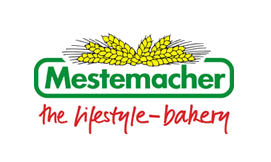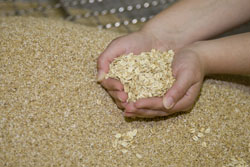Everyone’s eating organic bread
Organic products are enjoying ever-increasing popularity with consumers. In order to be able to label their own products with the government-recognised organic logo, producers have to meet much stricter requirements than apply to conventional products.
For organic breads these regulations apply from the production of the cereal crop to the production process in the bakery.
- Organic products must be produced and processed in accordance with the regulations governing organic agriculture. These are precisely set out by the EU rules on organic farming. So, for example, mineral nitrogen fertilizers, pesticides and herbicides may not be used in cereal farming.
- No genetically modified organism may be used in the fields or in the bakery.
- The only raising agents permitted by the EU rules on organic farming are yeast, natural sourdough and backferment. Since yeast is not an agricultural product, it can be of conventional origin.
- Organic breads consist in the main of wholegrain flour or whole grains.
- Dough made from organic ingredients is made and baked in exactly the same way as dough made from conventional ingredients.
- Organic bread should be made with as much respect for the ingredients as possible and so only certain additives are permitted. The only baking agents allowed are cream of tartar, calcium carbonate and ammonium carbonate. Synthetic ascorbic acid, phosphate and preservatives are not permitted. Modified starches, modified fats, mono and diglycerides of fatty acids, synthetic (nature identical) flavourings, genetically modified ingredients and additives are all similarly banned.
Organic bread is identified by the government’s hexagonal organic logo. Government-recognised organic certification bodies [Note: DE-ÖKO-001] regularly check all stages of production at the organic farms, at the mill and in the bakery to ensure that they are sticking to all of the regulations.
Source: Lebensmittel Praxis, issue 20/2008

